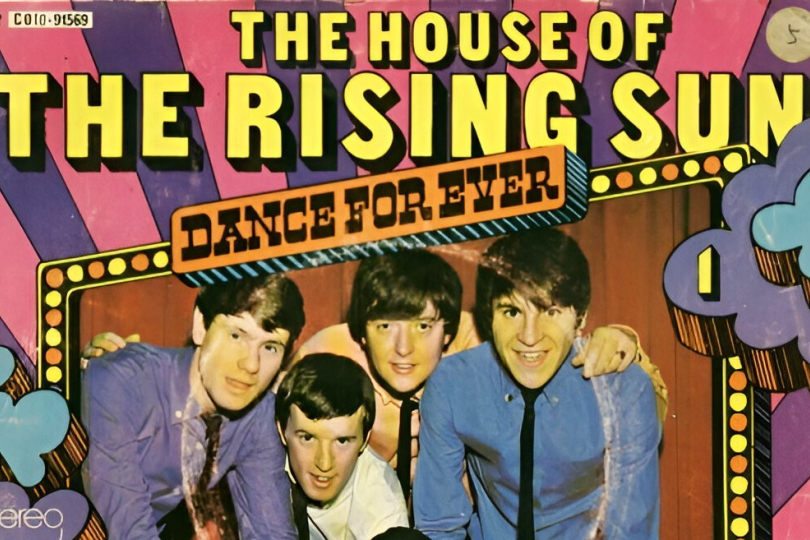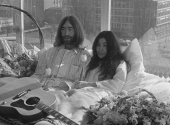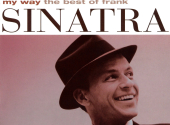
Story of a Hit #20: "House of the Rising Sun"
"House of the Rising Sun" has a long tale to tell, from humble beginnings to chart-topping success. While it's certainly best known for its version by The Animals, it has been recorded by countless artists, stretching back to 1933. Today we're looking at one of the most well-known rock songs of all time and the story of how it rose to fame.
Eric Burdon, lead singer of The Animals, first heard the song in a club in Newcastle, sung by a Northumbrian folk singer Johnny Handle. The Animals picked up the song, and started including it in their set, during a tour with American singer and guitarist, Chuck Berry.
It's a song that tells the story of a house of ill repute, of the wayward souls who frequented it and warns against making the same mistakes. While its origins might well stretch back to a 19th-century New Orleans brothel, the message is timeless – it was clearly going to be a show-stopper.
The Animals made it famous
They used it as a set finisher, and given its haunting soulful quality, it set them apart from the norm – from bands that finished with straight rock songs. The audience loved it, and this convinced producer Mickie Most that it had hit potential, so the Animals headed to a studio in 1964 and recorded "House of the Rising Sun" in just one take.
It is a now legendary recording, with every element of it capturing the song perfectly. From the opening guitar arpeggio by Hilton Valentine that glues the song together, to the powerful wailing vocals of Burdon, to the incessant organ lines of Alan Price – it's a great track, no doubt about that. It topped both the UK and US singles charts, becoming the first British Invasion number-one not connected with The Beatles.
Inspired by Bob Dylan
Valentine said he took Bob Dylan's chord progression, from his 1962 recording, and shifted it into 6/8, giving it that shuffle feeling. Bob Dylan's recording, an acoustic solo on guitar and voice, used the chord progression that for many musicians is now famously tied to "House of the Rising Sun" – Am / Am/G / D/F# / F / E / Am. A descending bass line takes the chords through a modern folk sound, through a sort of aeolian Am, a bittersweet D major chord, and closing with an F and E major, giving it a more conventional harmonic sound.
Apparently, when Bob Dylan first heard the Animals version on the radio while driving, he got out of his car and "banged on the bonnet". The success of the song – a song he had recorded only two years earlier, but with not nearly the radio play that The Animals version was experiencing – supposedly inspired him to go electric. Is it true? Well according to the author Ted Anthony: "We may never know (...) But I like the idea that our song (...) might have inspired a hard right turn by the folk revival's most recognisable icon."
But Dylan took the idea from another singer
But Dylan had borrowed his arrangement from another 60s folk singer, Dave Van Ronk, which he actually credited in the liner notes on his 1962 debut album. Dylan supposedly sought out Van Ronk and asked him if he could record his arrangement of "House of the Rising Sun" which Van Ronk described in his memoirs: "Jeez, Bobby, I'm going into the studio to do that myself in a few weeks. Can't it wait until your next album? (...) "Well", he said sheepishly, "I've already recorded it."
Van Ronk thought about suing The Animals for royalties, for taking his arrangement, but of course, the Animals had simply borrowed the ideas from Dylan's version, who in turn had taken them from Van Ronk. And listening to his version today and comparing it to The Animals and Dylan, you get a picture of how the music industry works, of how creative minds borrow and appropriate from each other.
Van Ronk's version uses many of the chords that Dylan solidified, and of course, his haunting voice is very reminiscent of Dylan and Burdon. Something that sets his version apart, however, is the free-flowing nature of the chord sequence. His guitar playing seemingly doesn't follow a set time signature, rather moving in a way to compliment his vocal phrases. At times, you can almost imagine it's in 6/8, which leaves you wondering if The Animals might have used his version as some sort of inspiration.
What's the most important recording?
To fully appreciate what Van Ronk did with this traditional song, you have to listen to some of the previous versions recorded by other artists. While Nina Simone recorded it on her debut album and played it for much of her career, her version stands out as somewhat of a black sheep. Other folk singers covered it in the 50s, for example, Glenn Yarbrough, Pete Seeger, and Andy Griffith, and each version is a slightly different take. But it is Josh White's 1942 recording, that is credited for inspiring many versions that followed it.
Josh White supposedly learnt the song from a "white hillbilly singer", and wrote numerous lyrics that would go on to become part of the many versions that followed. The haunting characteristic is there, as well as the slow meandering guitar, that obviously inspired many follow-up versions. But White may be responsible for putting it into a minor key, because only a year before Woody Guthrie recorded it with quite a different sound.
A timeless song
The origins of "House of the Rising Sun" could very well date back to a 16th or 17th-century English ballad. In its modern form, it is said to have been sung by American miners as early as 1905, with the lyrics first being printed in 1925 and the first recording in 1933 by Appalachian musicians Clarence "Tom" Ashley and Gwen Foster. It is a true folk classic, having crossed continents and recorded by countless artists, who have all left their mark on it. So I leave you with this, the earliest known recording of what today is one of the most famous hits of the 20th century.
What do you think is the best version of "House of the Rising Sun" and why? Whose version was the most influential?
Leave your opinion in the comments below!
If you have found an error or typo in the article, please let us know by e-mail info@insounder.org.





